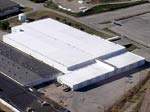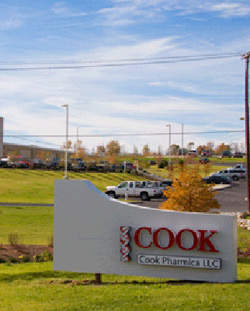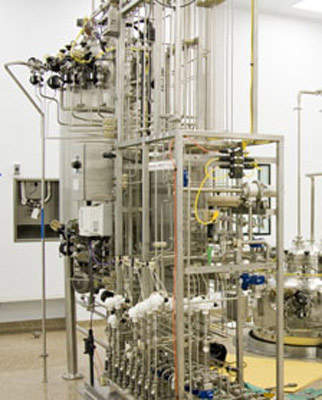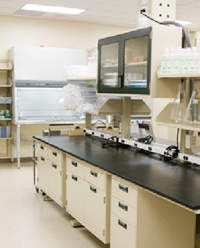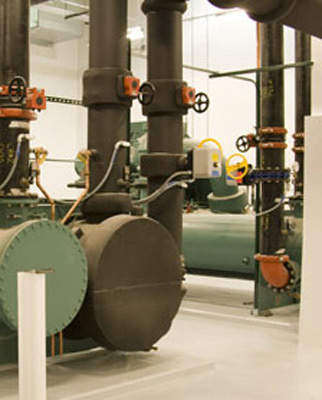Cook Pharmica LLC, the newest Cook Group company, completed the construction of a $70m biotechnology facility in Bloomington Indiana late in 2005. The plant was set up in the renovated former Thomson Consumer Electronics television assembly plant (440,000ft²), which closed in May 2004, to create the 124,000ft² facility. The campus has more than 600,000ft² of space on site for expansion.
The new plant is one of only a handful of contract manufacturing services facilities in the Midwest to produce monoclonal antibodies. The growing trend in cell culture-based therapeutics inspired Cook Group to transform the abandoned factory into an innovative new contract manufacturing facility. Currently, 35% of the pharmaceuticals produced are created through biotechnology and that number is expected to rise to 70% of all pharmaceuticals in the market by 2012.
The Phase II expansion of the plant, adding 118,000ft² to the existing production facility, was started in 2008 and will be completed in 2010.
Cook Pharmica is focused on mammalian cell culture-based production of active pharmaceutical ingredients (API). In addition to its manufacturing train offering scale-up capabilities to 5,000l, Cook Pharmica also provides contract development and analytical services.
Starting production
Cook Pharmica was also the first contract manufacturer to offer webcam services via secure internet connections to its customers – the US Food and Drug Administration (FDA) and other regulatory agencies, pending client approval. This innovation enables both clients and regulatory agencies to view production from their own office or at an on-site workstation.
Cook Pharmica added 200 jobs to the Bloomington-area economy following the start of phase I operations at full scale. Manufacturing began at the end of 2006 following extensive validation and testing at the plant by the FDA and independent auditors.
In March 2007 the facility won the ‘Facility of the Year Award’ in the ‘Facility Integration’ category.
Sponsors
During the facility’s development, the company worked closely with the Bloomington Economic Development Corporation, BioCrossroads, Indiana Health Industries Forum, Bloomington Life Sciences Partnership, local and state government agencies and major research universities in the state including Purdue University and Indiana University.
Cook Pharmica capabilities
The company grows cell cultures for small biotech companies without production capabilities, as well as large biopharmaceutical companies in need of additional bioreactor capacity. The plant has the ability to manufacture quantities large enough for clinical trial use and small-scale commercial use.
In addition to manufacturing, the facility also provides the following services: cell banking, analytical development, process development (offered from late 2006), and stability storage and testing.
Plant construction
Project Phoenix (phase I) included the renovation and construction within the first of two buildings that were the former home of the world’s largest television assembly plant. The renovation and construction of 124,000ft² included office areas, a manufacturing train, a shell for a second manufacturing train, development laboratories, quality control laboratories, warehouse, and process utilities, designed to support up to two manufacturing trains. Construction on the abandoned television assembly plant was completed in ten months.
With the footprint available for future expansion already in place and a second, independent building of 450,000ft², Cook Pharmica’s facility was poised to expand with clients’ project needs. Initial demolition and construction work began in May 2004. The project general contractor responsible for the partial demolition and then refurbishment of the old Thomson RCA factory was RL Turner Corp of Zionsville, Indiana.
The project was challenging because it involved taking an old, existing building and revamping every square inch efficiently and correctly. The initial work was to provide room for office space, cleanrooms and process areas.
Instead of new construction, the process involved revamping concrete floors with special coatings and changing the structural steel to accommodate the new infrastructure and equipment.
GS Ridgway & Associates was the architect, and Silver Creek Engineering was the structural engineer. RL Turner was also the project coordinator for six prime contractors and 28 subcontractors. Building Associates was responsible for the installation of a new single-ply roof membrane at the facility.
Project Planning & Delivery was the project manager, Clark, Richardson and Biskup (CRB) was consulting engineer and Commissioning Agents was responsible for validation of the new facility. AES Clean Technology of Montgomeryville, Pennsylvania, US was involved in the manufacturing facility design/build process. It was also involved in designing the 19,000ft² clean room suite.
Mussett Nichols and Associates’ contributions to the project included designing the laboratory, material storage and support areas, mechanical and electrical utility systems, and overall coordination.
Other contractors included: Harry J Kloeppel and Associates, Harrell-fish Inc (HFI), Cassady Electrical Contractors Inc, Trane, Spriax/UltraPure, Cummins Inc, the Rovisys Company Inc (Emerson Delta V), ESC, Cleaver-Brooks Inc, YORK, Baltimore Air Coil (BAC), ABEC And Wave Biotech, Westfalia Separator, IPEC, Millipore, Pall Corporation, Mueller and DCI, Cornerstone Flooring and Linings and Siemens Building Technologies Inc.
Biotechnology facilities
The new plant uses stainless steel and single-use disposable bioreactors and disposable containers for media and buffers. The plant has two 2,500l bioreactors, one 600l bioreactor and multiple bioreactors with capacities of up to 100l.
This means the plant is capable of producing quantities of material for clinical trials and also scaling up to small-scale commercial manufacture. A manufacturing executions system (MES) has provided operators and users with real-time access to process data. There are four dedicated processing areas, disposable bags for media and buffer, wall pass-throughs and unidirectional flow for operators, equipment and supplies.
In addition, there are configurable downstream equipment systems and a modular and compliant architecture to increase the convenience of contract manufacture and make the transfer of processes much easier. There are dedicated project managers at the plant.
Phase two
In February 2008 the phase II expansion of the plant was announced, which will cost around $80m and add 118,000ft² to the existing site, producing 200 extra jobs to more than double the existing workforce. The new expansion to the plant will involve new facilities for contract formulation, filling and finishing services to the pharmaceutical industry.
The expansion will include two new fill and finishing lines with one being a high-speed syringe filling line and the other a low to medium-speed vial filling line with lyophilisation capacity. The syringe filling unit will have annual capacity of 70 million fills and a filling speed of 600 syringes/minute. The unit’s features include E-beam sterilisation, time pressure filling mechanism andautomated debagging/lid removal.
The vial filling and lyophilisation line will have annual capacity of 15 million and a filling speed of 150 vials/minute. Component sizes varying from 2ml to 20ml can be filled by the line. The lyophilisation capacity of the unit will be 250ft². Features of the line include standard (tunnel) component sterilisation, time pressure filling mechanism and isolated capper.
Both lines of the new lines will be equipped with state-of-the-art isolator technology for safety. The expansion sets the company up to move into the filling of additional parenteral vial and syringe product areas such as simple solutions and diluents, suspensions, vaccines, proteins and biologics.
The finishing unit will have complementary inspection and labelling and packaging capablities including assembly of safety devices.
Incentives for the phase II project include $2.2m from the Indiana Economic Development Corporation in tax credits that will be based on performance. In addition there would be up to $100,000 in training grants providing the company hits its employment commitments. The construction of the plant’s phase II expansion started in 2008 and is expected to be complete by early 2010.

